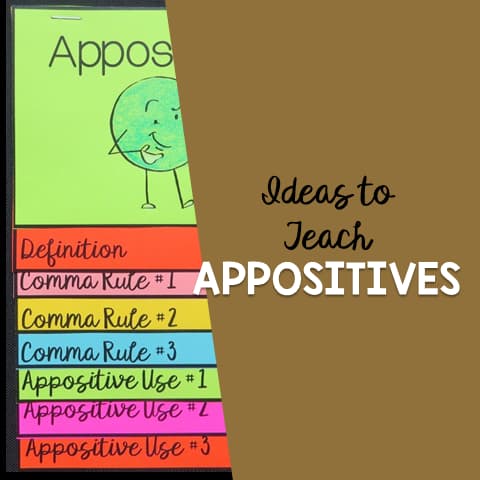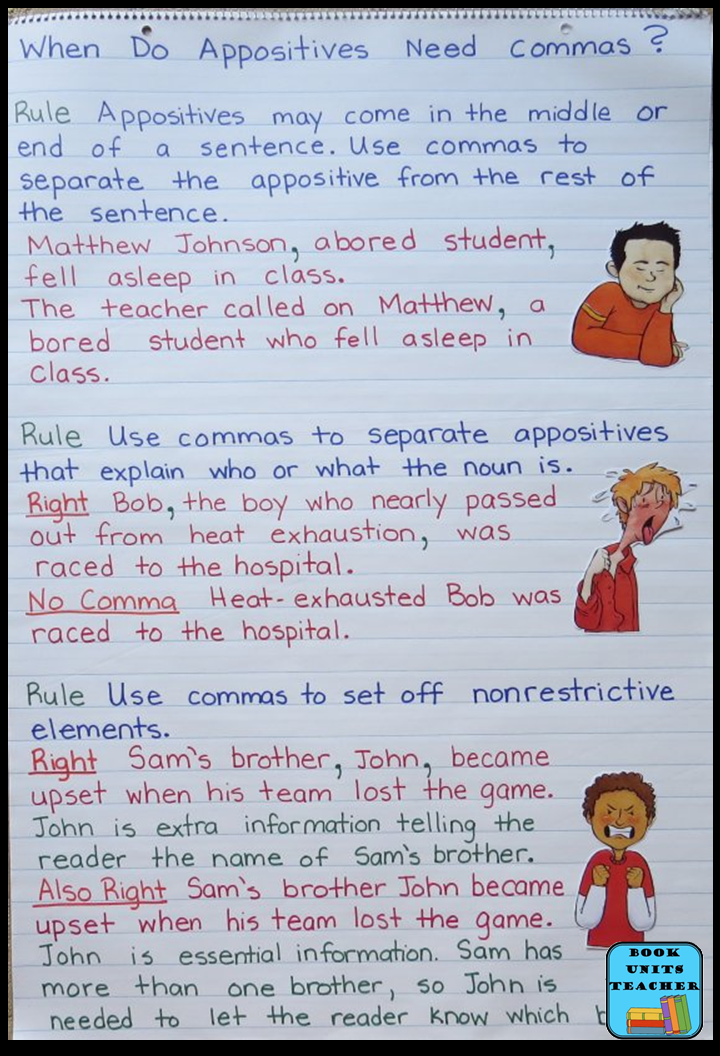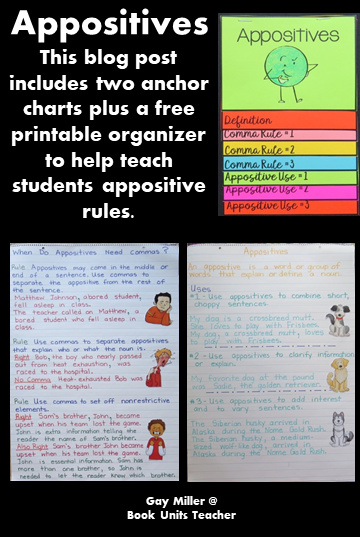
Teaching grammar doesn’t have to feel like pulling teeth—or pulling your students’ attention away from TikTok. Appositives might sound fancy, but they’re just sneaky little noun-revealers that give sentences a boost of flavor and clarity. And yes, I brought charts, organizers, and video reinforcements because you deserve backup.
Here’s what’s in the lesson handout:
- a clear definition + how to spot appositives in the wild
- two anchor chart inspirational ideas for teaching the rules (yes, commas matter!)
- two student-friendly videos
- an organizer flip chart that walks kids through the rules
- real examples with just the right amount of sass and syntax
First things first—what’s an appositive?
An appositive is a word or group of words that explains or identifies another noun. Basically, it jumps in and says, “Hey! Let me tell you more about that noun!”
Appositives Anchor Charts

This anchor chart goes over the rules for when commas should be used.
Here’s an explanation of the first example:
A bored student, Matthew Johnson, fell asleep in class. In this example, Matthew Johnson is extra information that tells the reader the student’s name, so a comma is needed.
Notice that the sentence makes perfect sense after removing the extra information.
A bored student fell asleep in class.
In this example, a comma is needed.

General Rules
As the anchor chart points out, appositives may be located in the middle or end of a sentence. Depending on the location of the appositive, use one or two commas to separate it from the rest of the sentence.
One generalization is that one-word appositives do not need commas. Warn students that while this is often true, the sentence must be analyzed. The students must ask, “Is the information in the appositive essential?” To understand this better, look at the third example on the anchor chart.
Appositive Rules: A Nutshell Edition
- Identify the noun being explained.
- Use commas for nonrestrictive phrases.
- Don’t repeat—enhance.
- Add variety and expand short sentences.
- Challenge students to write with style (and control!).
Why Use Appositives?

- combine choppy thoughts into smooth ideas
- clarify who’s who in a sentence
- stretch sentences with relevant, juicy details
- meet CCSS goals without turning into a grammar robot
And if you need a quick intro, the videos are bite-sized and classroom-tested.
With this tool, our writers will discover a new way to enhance their communication skills.
Appositives Anchor Videos

This short video works well as an introduction to appositives. The two examples seen here are explained.

This YouTube video goes over the three examples seen here.
Included in the handout is a comprehensive organizer flip chart covering the rules for using appositives in a user-friendly format. This flipchart is a valuable resource for our students, offering step-by-step guidance on incorporating appositives.
Click the button to download the organizer to use with your students.
The organizer contains the same information as the anchor charts. Using the two together makes a great mini-lesson.
Click on the buttons to visit other posts in this series.


